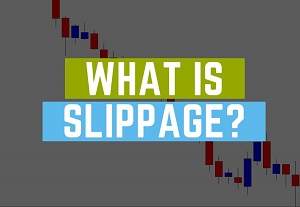The Slippage Dilemma: Navigating Smooth Trading in Forex Markets

Forex trading, a bustling global marketplace for currency exchange, has seen a surge in popularity in recent years. Its allure lies in its accessibility and the potential for substantial returns, attracting a diverse array of traders, from individuals to large financial institutions. Yet, amid the excitement of this dynamic environment, lurks a concept every trader should be well-versed in: slippage.
Understanding and effectively managing slippage is crucial for success in forex trading. Slippage, defined as the variance between anticipated and actual execution prices of trades, can significantly impact trading outcomes and profitability. In this article, we'll delve deep into the complexities of slippage, exploring its causes, risks, and implications. Additionally, we'll equip traders with practical strategies to mitigate its effects and enhance their overall trading performance. So, let's embark on a journey to navigate the slippage dilemma and pave the way for smoother trading experiences in the forex markets.
Slippage Explained
Slippage, a common term in forex trading, refers to the variance between the anticipated and actual execution prices of a trade. In simpler terms, it reflects the difference between the price traders expect to pay or receive for a currency pair and the price they actually end up transacting due to prevailing market conditions.
This phenomenon often manifests during periods of heightened market volatility or diminished liquidity. When market dynamics shift rapidly, such as during significant economic disclosures or geopolitical events, traders may struggle to execute orders at their desired price levels. Consequently, orders may be filled at less favorable prices than anticipated, resulting in slippage.
For instance, imagine a scenario where a trader initiates a market order to purchase a currency pair at a specified price. However, by the time the order reaches the market and is executed, the actual price may have surged due to increased demand or swift market fluctuations. Consequently, the trader ends up purchasing the currency pair at a higher price than initially expected, experiencing slippage.
Similarly, in a volatile market environment, a trader may set a Stop Loss order to curtail potential losses on an existing position. Yet, if market conditions abruptly change, the Stop Loss order might be triggered at a price significantly worse than intended, leading to more extensive losses than anticipated due to slippage.
The implications of slippage for traders can be significant, affecting both profitability and risk management strategies. By grasping the mechanics of slippage and its potential ramifications, traders can make more informed decisions and devise strategies to alleviate its impact. Effectively managing slippage is crucial for optimizing trading performance and mitigating unforeseen losses in the forex market. In the ensuing sections, we'll delve deeper into the factors contributing to slippage, its associated risks, and strategies for minimizing its effects.

Factors Contributing to Slippage
Market volatility is a key driver behind slippage occurrences. During times of elevated volatility, such as major economic data releases or geopolitical uncertainties, prices can experience rapid fluctuations, posing challenges for traders in executing orders at desired levels. Consequently, slippage becomes more prevalent amid these periods of heightened market activity.
Moreover, the size of orders also impacts the likelihood and severity of slippage. Larger orders exert a more pronounced influence on market liquidity, necessitating matching with multiple counterparties for execution. Consequently, traders placing substantial orders may encounter slippage as the market adjusts to accommodate the influx of buying or selling pressure.
Another crucial factor affecting slippage is market liquidity, referring to the depth of the market. In highly liquid markets, characterized by ample buyers and sellers, traders can execute orders with minimal price slippage. Conversely, in illiquid markets with fewer participants and reduced trading activity, orders may be filled at prices significantly deviating from desired levels, resulting in heightened slippage.
Furthermore, trading during news events introduces additional risks of slippage. Economic releases and geopolitical developments can trigger sudden and substantial price movements, leading to order executions at prices different from those anticipated by traders. Consequently, traders often exercise caution during these volatile periods to mitigate the risk of slippage and potential losses.
Navigating the Risks and Implications of Slippage
Slippage, a prevalent aspect of forex trading, carries significant implications for traders, necessitating a thorough understanding of its associated risks. In this section, we explore the multifaceted risks and implications of slippage, delving into its financial, risk management, and psychological dimensions. By gaining insights into the challenges posed by slippage, traders can devise effective strategies to mitigate its impact and bolster their overall trading performance.
Financial Consequences
Slippage can exert a considerable financial toll on traders, leading to unexpected trading costs and diminished profitability. When orders are executed at prices divergent from those anticipated, traders may incur additional expenses, such as widened spreads or heightened transaction costs, thereby eroding their profits. Moreover, recurrent or severe slippage can undermine the efficacy of trading strategies, resulting in overall lower returns.
Implications for Risk Management
Effectively managing slippage is pivotal for sound risk management in forex trading. Traders must integrate slippage considerations into their risk management strategies to mitigate its potential adverse effects on their trading accounts. This may involve establishing realistic profit and loss targets, implementing Stop Loss orders to curtail potential losses, and diversifying trading positions to spread risk. By factoring in slippage considerations into their risk management plans, traders can fortify the protection of their capital and sustain long-term profitability.
Psychological Impact
Slippage can also have a profound psychological impact on traders, influencing their confidence and emotional well-being. Encountering frequent slippage can diminish trader confidence and evoke feelings of frustration, anxiety, or disappointment. Moreover, unexpected slippage can erode traders' trust in their trading platforms or execution methods, prompting them to question their decisions and hesitate to enter trades. Over time, prolonged exposure to slippage may contribute to stress and burnout, impairing traders' ability to make rational and disciplined trading decisions. Recognizing and addressing the psychological impact of slippage is imperative for maintaining mental resilience and emotional stability in forex trading.

Strategies to Minimize Slippage
Effectively managing slippage in forex trading requires employing proactive strategies to reduce its impact. Here are some key approaches:
Optimal Liquidity Periods
Choosing to trade during peak liquidity periods can significantly lower the risk of slippage. Liquidity is highest during major trading sessions overlap, like the London and New York sessions, when market activity intensifies. During these times, a greater number of market participants are actively buying and selling currencies, resulting in smoother transactions and tighter spreads. Conversely, liquidity tends to decrease when major financial markets are closed or less active, such as during the Asian session. Aligning trading activities with optimal liquidity periods can help traders mitigate the chances of experiencing significant slippage.
Utilize Limit Orders
Integrating limit orders into trading strategies proves effective in mitigating slippage impact. Limit orders enable traders to specify the maximum price they are willing to pay (or the minimum price they are willing to accept) for a trade. By establishing predetermined price levels, limit orders ensure that trades are executed at desired prices or better. This proactive approach allows traders to exert control over execution prices, thereby reducing the risk of adverse price movements leading to slippage. Moreover, limit orders act as a safeguard against sudden market spikes or price gaps, enhancing risk management.
Steer Clear of Trading During News Events
News events, such as economic releases and geopolitical developments, often trigger increased market volatility, heightening the risk of slippage. During these periods, rapid price movements and heightened trading activity can lead to significant slippage, resulting in unexpected losses. To minimize exposure to slippage during news events, traders may choose to refrain from trading altogether or reduce position sizes to limit risk exposure. Alternatively, traders can implement protective measures such as widening Stop Loss orders or using pending orders to enter trades after the initial market reaction has subsided. By exercising caution and avoiding trading during periods of elevated volatility, traders can mitigate the impact of slippage on their trading outcomes and safeguard capital.
Key Takeaways
In summary, mastering slippage is essential for achieving success in forex trading. Slippage, characterized by unexpected price discrepancies during trade execution, can significantly influence trading outcomes and profitability. By understanding the factors contributing to slippage and implementing proactive measures to mitigate its impact, traders can elevate their trading experience and minimize potential losses.
Throughout this discourse, we've extensively examined the concept of slippage in forex trading, delving into its origins, hazards, and ramifications. We've underscored the significance of trading during optimal liquidity periods, leveraging limit orders, and abstaining from trading during news events as fundamental strategies for mitigating slippage risk.
As traders navigate the dynamic landscape of the forex market, maintaining vigilance and proactivity in managing slippage is paramount. By staying abreast of market developments, adapting to evolving conditions, and employing robust risk management techniques, traders can effectively counteract the effects of slippage and enhance their overall trading outcomes. Remember, diligence and preparedness serve as indispensable allies in navigating the complexities of slippage and attaining success in forex trading.
About AdroFx
Established in 2018, AdroFx is known for its high technology and its ability to deliver high-quality brokerage services in more than 200 countries around the world. AdroFx makes every effort to keep its customers satisfied and to meet all the trading needs of any trader. With the five types of trading accounts, we have all it takes to fit any traders` needs and styles. The company provides access to 115+ trading instruments, including currencies, metals, stocks, and cryptocurrencies, which make it possible to make the most out of trading on the financial markets. Considering all the above, AdroFx is the perfect variant for anyone who doesn't settle for less than the best.









